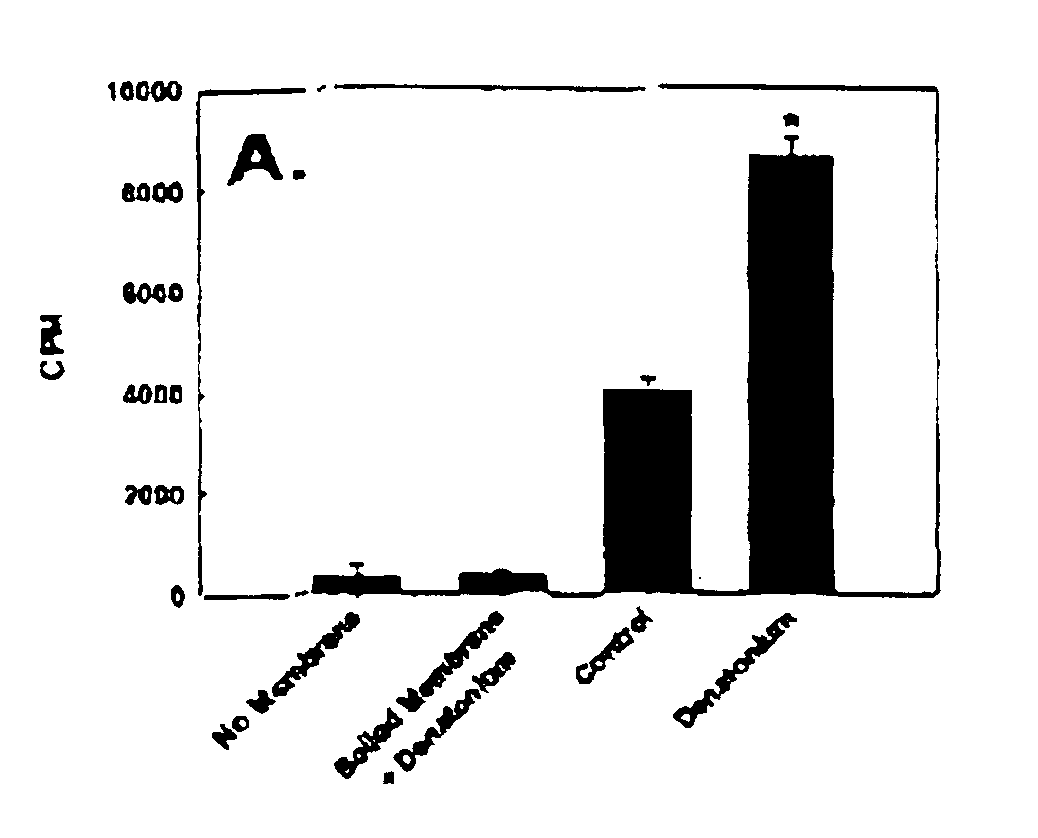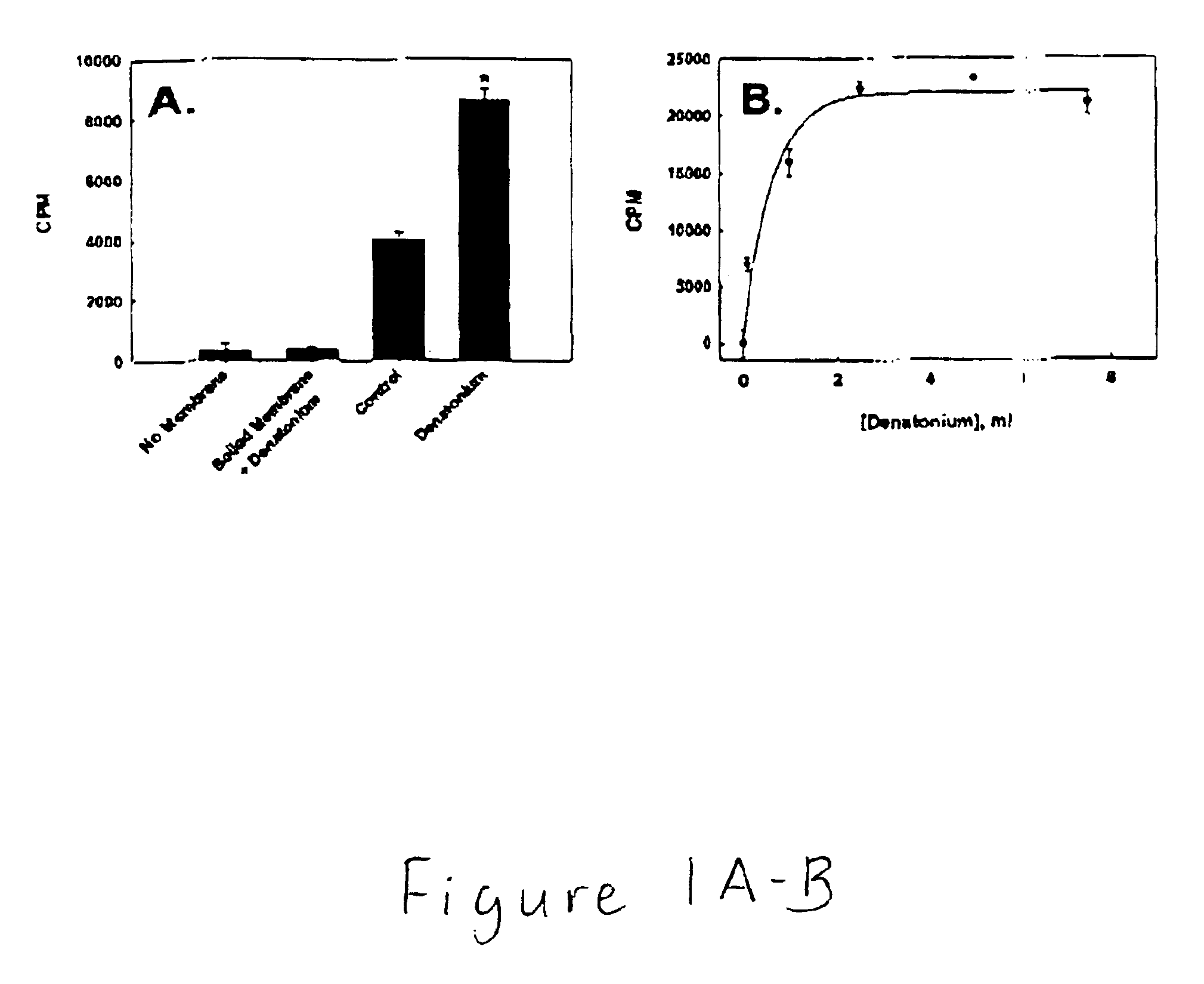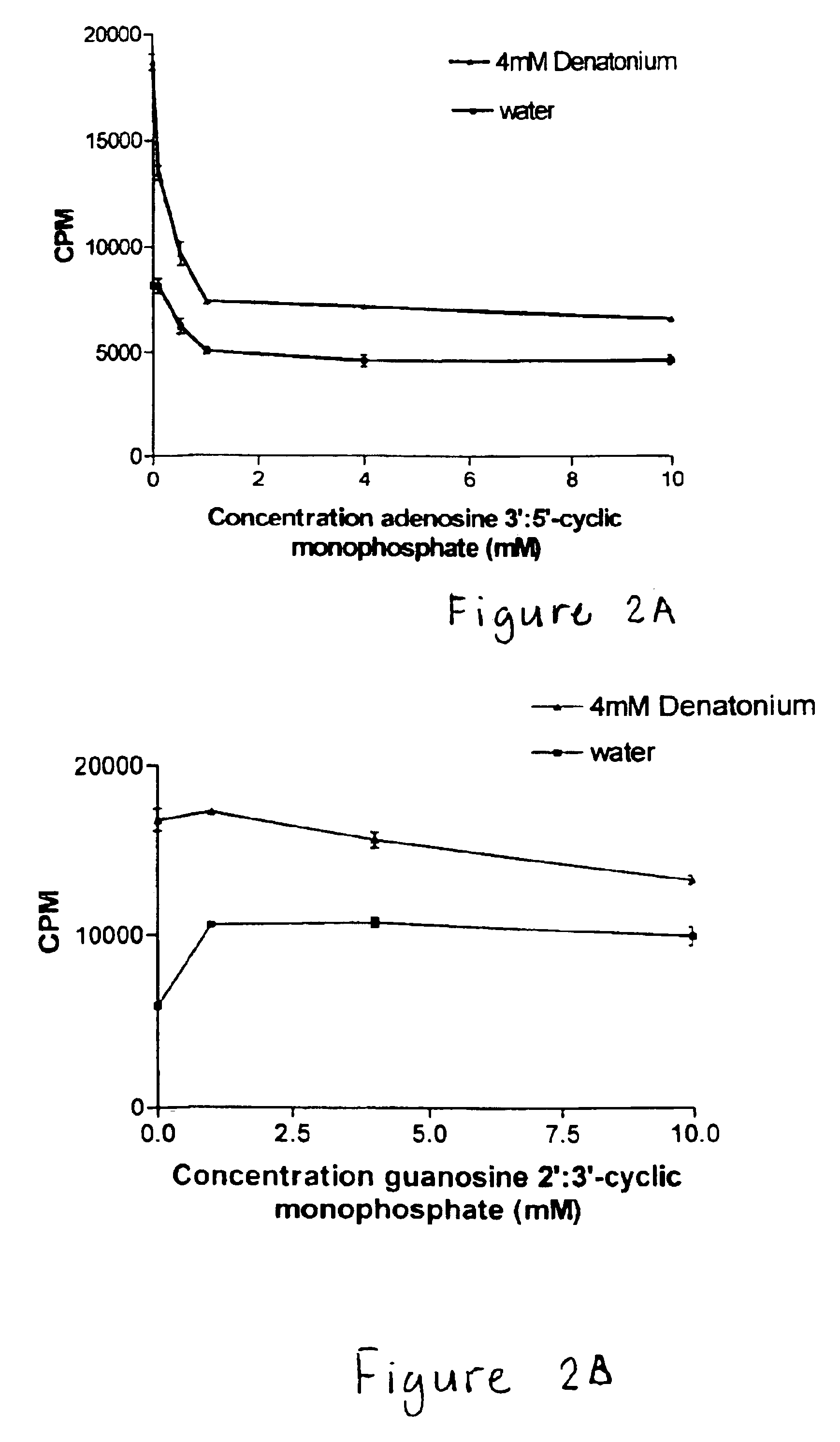Nucleotide compounds that block the bitter taste of oral compositions
a technology of nucleotide compounds and oral compositions, which is applied in the field of nucleotide compounds that, can solve the problems of preventing rapid oral absorption of pharmaceuticals, ineffective approach at masking the taste of bitter compounds, etc., and achieves the effects of enhancing the flavor of foods, beverages, and reducing the perception of bitterness
- Summary
- Abstract
- Description
- Claims
- Application Information
AI Technical Summary
Benefits of technology
Problems solved by technology
Method used
Image
Examples
Embodiment Construction
[0017]The present invention provides for methods of inhibiting a bitter taste resulting from contacting a taste tissue of a subject with a bitter tastant, comprising administering to the subject an effective amount of a bitterness inhibitor, such as a bitterness inhibitor identified by measuring G-protein. The present invention also provides for methods of inhibiting a bitter taste of a composition, comprising incorporating, in the composition, an effective amount of a bitterness inhibitor. An “effective amount” of the bitterness inhibitor is an amount that subjectively decreases the perception of bitter taste and / or that is associated with a detectable decrease in G-protein activation as measured by one of the above assays.
[0018]The present invention is based on the discovery that nucleotide compounds and related chemical derivatives are capable of inhibiting bitter tastant mediated activation of G-proteins. In addition, in vivo taste assays were utilized by testing their activity ...
PUM
| Property | Measurement | Unit |
|---|---|---|
| concentrations | aaaaa | aaaaa |
| volume | aaaaa | aaaaa |
| temperature | aaaaa | aaaaa |
Abstract
Description
Claims
Application Information
 Login to View More
Login to View More - R&D
- Intellectual Property
- Life Sciences
- Materials
- Tech Scout
- Unparalleled Data Quality
- Higher Quality Content
- 60% Fewer Hallucinations
Browse by: Latest US Patents, China's latest patents, Technical Efficacy Thesaurus, Application Domain, Technology Topic, Popular Technical Reports.
© 2025 PatSnap. All rights reserved.Legal|Privacy policy|Modern Slavery Act Transparency Statement|Sitemap|About US| Contact US: help@patsnap.com



